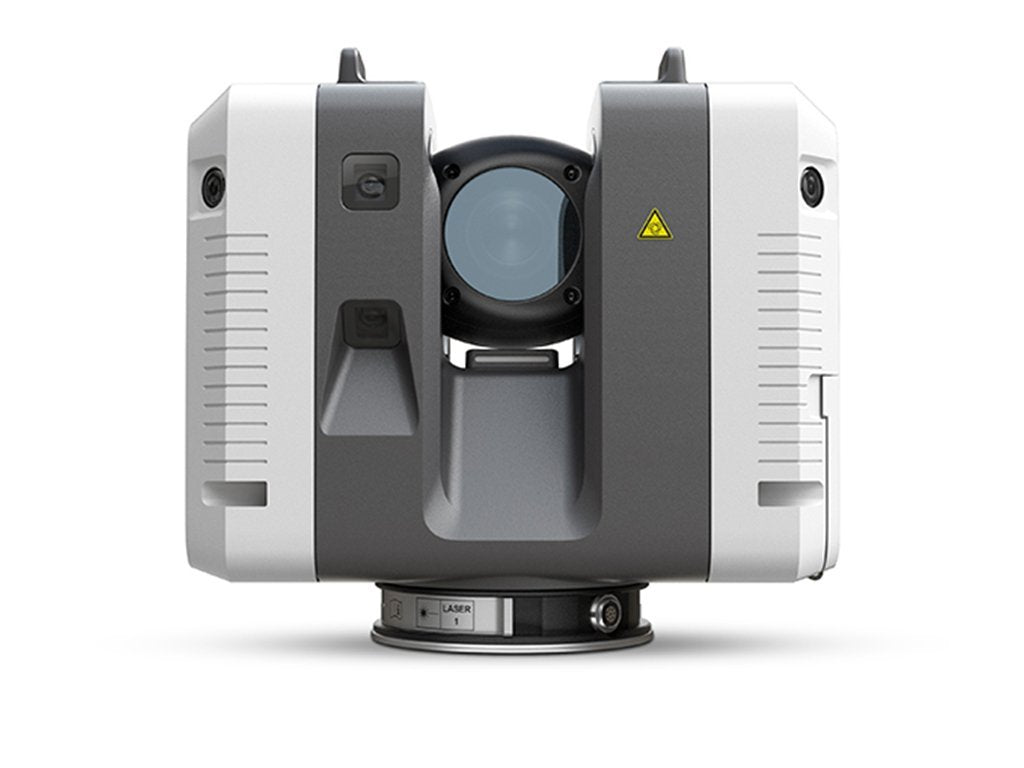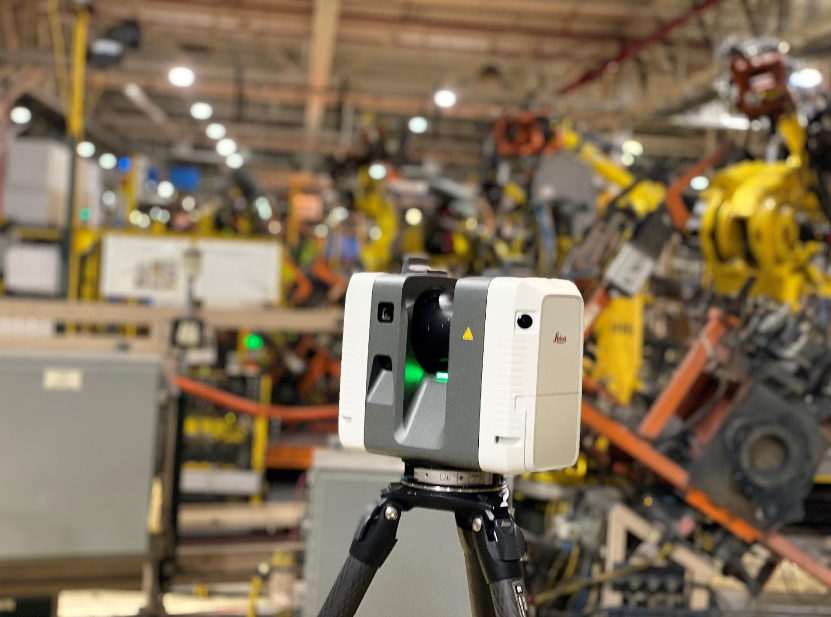Checking out the Applications of 3D Laser Scanning in Archaeology and Cultural Heritage Conservation
The assimilation of 3D laser scanning technology in archaeology and social heritage conservation notes a substantial advancement in exactly how historical sites and artifacts are recorded and analyzed. This non-invasive method gives exact spatial information, disclosing elaborate information that were previously difficult to record. As the applications of this modern technology proceed to develop, numerous effects for education, documents, and conservation arise, welcoming additional exploration right into its transformative effect on the field.
Understanding 3D Laser Scanning Modern Technology
3D laser scanning modern technology has transformed the area of archaeology by giving exact and comprehensive spatial information. This advanced modern technology utilizes laser light beams to catch millions of information points from a things or site, producing a highly precise three-dimensional representation (3D Scanning). The resulting factor clouds can expose intricate information of archaeological sites, structures, and artefacts that could be undetectable to the nude eye
Using this innovation, archaeologists can record the specific dimensions, forms, and settings of objects with unmatched precision. This technique reduces the risk of human mistake and removes the need for substantial hand-operated dimensions. The data accumulated can be examined and shared quickly, assisting in collaboration among researchers. By incorporating 3D laser scanning with GIS and various other digital tools, excavators boost their ability to imagine and analyze historic contexts, leading to deeper understandings right into old societies and environments.
Enhancing Archaeological Paperwork
3D laser scanning significantly enhances archaeological paperwork with its capacity to produce accurate website maps. This modern technology assists in in-depth artifact analysis, offering insights that standard techniques might ignore. On top of that, it assures the conservation of contextual information, which is necessary for recognizing the partnerships within historical websites.
Accurate Site Mapping
While traditional mapping techniques typically battle with catching the complex information of historical sites, progressed laser scanning modern technology supplies a cutting edge approach to precise website mapping. This method allows archaeologists to create very outlined and specific three-dimensional representations of websites, showcasing topographical variations and structural attributes with impressive fidelity. The capability to record millions of data factors in a matter of minutes enables complete documentation, which can be easily updated and shared amongst researchers. Additionally, laser scanning promotes the dimension of complex geometries that would be difficult to analyze utilizing conventional tools. As a result, this innovation improves the accuracy of website maps, contributing substantially to the conservation and understanding of social heritage sources.
In-depth Artefact Analysis
Laser scanning innovation greatly improves the analysis of archaeological artifacts, providing scientists with unmatched information and accuracy. This method captures complex surface structures, measurements, and includes that standard paperwork methods might neglect. By creating high-resolution 3D designs, scholars can very closely check out artefacts without the risk of damages inherent in physical handling. This precision permits far better comparative studies, allowing experts to determine production techniques, stylistic variants, and potential social significance. In addition, the ability to control and envision data in three dimensions assists in a much deeper understanding of artifact functionality and usage. In general, laser scanning promotes an extra thorough method to archaeological documents, making certain that crucial details regarding artifacts is protected for future research study and education and learning.
Preservation of Contextual Data
Maintaining contextual information is important for boosting archaeological documentation, as it ensures that searchings for are recognized within their initial ecological and cultural frameworks. 3D laser scanning technology greatly adds to this preservation initiative by capturing detailed spatial relationships amongst artefacts, frameworks, and their atmospheres. By producing exact 3D designs, archaeologists can document the exact places and orientations of objects sitting, helping with a detailed understanding of their context. This modern technology makes it possible for scientists to review and evaluate sites long after excavation, keeping the integrity of contextual details. Furthermore, digital records developed with scanning can be shared worldwide, fostering joint research and public involvement. Ultimately, preserving contextual data with 3D laser scanning improves archaeological stories and promotes a more profound gratitude of cultural heritage.
Conservation of Cultural Heritage Sites
As developments in technology remain to develop, the conservation of social heritage sites has come to be progressively dependent on ingenious methods such as 3D laser scanning. This innovation allows for the thorough documentation of frameworks, landscapes, and artifacts, recording their accurate dimensions and spatial connections in a non-invasive fashion. By creating high-resolution 3D versions, scientists can evaluate and check degeneration patterns, enabling positive preservation approaches.
Additionally, 3D laser scanning assists in the sharing of detailed site information with the international community, promoting partnership amongst chroniclers, conservationists, and archaeologists. These versions act as very useful sources for education and public engagement, increasing understanding of social heritage problems. In addition, the electronic documents developed can safeguard against loss due to environmental factors, vandalism, or overlook. On the whole, 3D laser scanning stands for a transformative technique to the conservation of social heritage, making certain that these websites can be researched and valued by future generations.

Remediation and Repair Efforts
The detailed paperwork attained with 3D laser scanning plays a substantial role in reconstruction and reconstruction initiatives within archaeology. This technology offers specific measurements and high-resolution imagery, enabling accurate digital designs of frameworks and artefacts. These models act as crucial recommendations throughout restoration processes, allowing excavators to visualize the original style and make notified choices concerning materials and methods required for repair.
Furthermore, 3D laser scanning assists in the repair of harmed or lost elements by creating comprehensive reproductions. This process aids in making sure that restorations preserve historic stability while likewise enabling cutting-edge strategies to recover websites. The capacity to examine wear patterns and structural weaknesses via scanned information improves understanding of a website's historic context and its use over time. 3D laser scanning not only protects the physical facets of social heritage however likewise enriches the narrative of background, guiding future restoration ventures.
Educational and Research Opportunities
The assimilation of 3D laser scanning in archaeology opens substantial academic and study possibilities. Academic collaborations can boost the understanding of old sites, while specialized training workshops furnish professionals with necessary abilities for using this innovation. With each other, these campaigns promote a richer engagement with historical techniques and approaches.
Academic Collaborations in Archaeology
Collective initiatives in archaeology have actually come to be increasingly vital for advancing both educational and research opportunities. By cultivating partnerships amongst Visit Your URL colleges, research institutions, and social heritage organizations, these collaborations help with the exchange of understanding and resources, improving the top quality of archaeological research studies. Joint tasks often take advantage of diverse knowledge, permitting detailed evaluations and ingenious techniques, especially in the application of modern technologies like 3D laser scanning. Such cooperations additionally promote interdisciplinary methods, engaging areas such as location, history, and preservation science. In enhancement, academic partnerships usually bring about the growth of new educational programs and training programs, preparing the future generation of archaeologists to efficiently use innovative technologies in their job. Ultimately, these alliances contribute to the conservation and understanding of social heritage.
Training Workshops for Experts
Training workshops for specialists in archaeology are increasingly important for enhancing abilities in the application of innovative technologies such as 3D laser scanning. These workshops supply participants with hands-on experience in making use of cutting-edge devices and software, fostering a deeper understanding of data capture and evaluation processes. Professionals can learn to produce precise electronic versions of historical websites, which noticeably aid in documents and conservation initiatives. Furthermore, these training sessions often include discussions on finest techniques and study, promoting understanding exchange among participants. By purchasing continual education, professionals can remain updated on evolving technologies, eventually boosting the performance of their research study and social heritage preservation initiatives. This dedication to ability enhancement is essential for advancing the area of archaeology.
Future Fads in 3D Laser Scanning for Archaeology
As developments in technology proceed to improve numerous areas, the future of 3D laser scanning in archaeology promises to enhance both the precision and performance of site documentation and analysis. Arising patterns show a growing assimilation of expert system and machine learning, helping with automated information handling and interpretation. This development will permit excavators to analyze complex datasets quicker, resulting in faster insights right into historic contexts.
Moreover, the combination of drone modern technology with 3D laser scanning is most likely to increase, making it possible for thorough airborne studies of historical sites that are challenging to access. The boosting price of scanning equipment will democratize accessibility, empowering smaller sized organizations and independent researchers to utilize these devices efficiently. Furthermore, innovations in online reality and increased truth will certainly allow immersive experiences for public involvement and education and learning, making historical searchings for extra accessible and interactive. These patterns jointly indicate a transformative future for archaeology, boosting conservation initiatives and broadening the self-control's outreach.
Regularly Asked Concerns
Just How Much Does 3D Laser Scanning Tools Cost?

What Are the Limitations of 3D Laser Scanning?
The constraints of 3D laser check over here scanning consist of high expenses, possible information handling obstacles, level of sensitivity to ecological conditions, and trouble catching elaborate details in complicated try this site surface areas, which can influence the precision and efficiency of checked depictions. (3D Scanning)

Can 3D Laser Scanning Be Used Underwater?
Yes, 3D laser scanning can be used underwater, however it requires customized equipment and techniques to overcome difficulties such as water distortion and restricted visibility. Successful applications have actually been demonstrated in aquatic archaeology and undersea surveys.
The length of time Does a Scanning Project Generally Take?
A scanning job generally takes anywhere from a few days to numerous weeks, depending upon the complexity and size of the area being scanned, in addition to the preparation and post-processing requirements involved in the task.
Exist Details Software Application Requirements for Handling 3D Checks?
Yes, specific software requirements for refining 3D scans consist of programs efficient in managing large point clouds, such as Autodesk Wrap-up, Cyclone, or MeshLab. These devices help with evaluation, visualization, and integration right into numerous applications effectively.
The combination of 3D laser scanning innovation in archaeology and cultural heritage preservation notes a significant improvement in exactly how historic websites and artefacts are recorded and evaluated. 3D laser scanning innovation has changed the area of archaeology by giving precise and comprehensive spatial information. As improvements in modern technology proceed to progress, the conservation of cultural heritage sites has actually ended up being progressively reliant on innovative approaches such as 3D laser scanning. As advancements in modern technology continue to reshape numerous areas, the future of 3D laser scanning in archaeology guarantees to improve both the precision and effectiveness of website paperwork and evaluation. The assimilation of drone modern technology with 3D laser scanning is likely to expand, enabling detailed aerial surveys of archaeological sites that are challenging to gain access to.